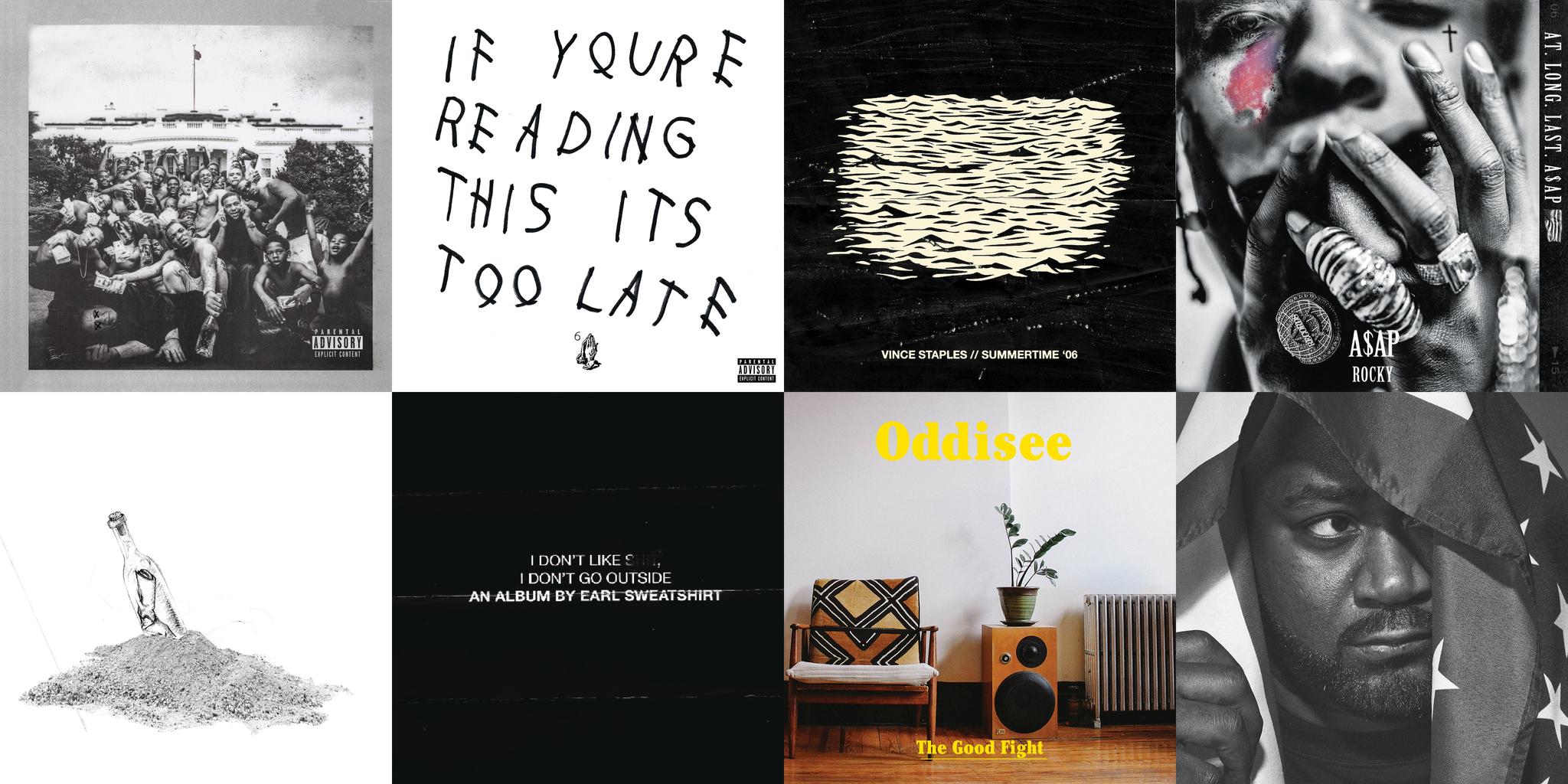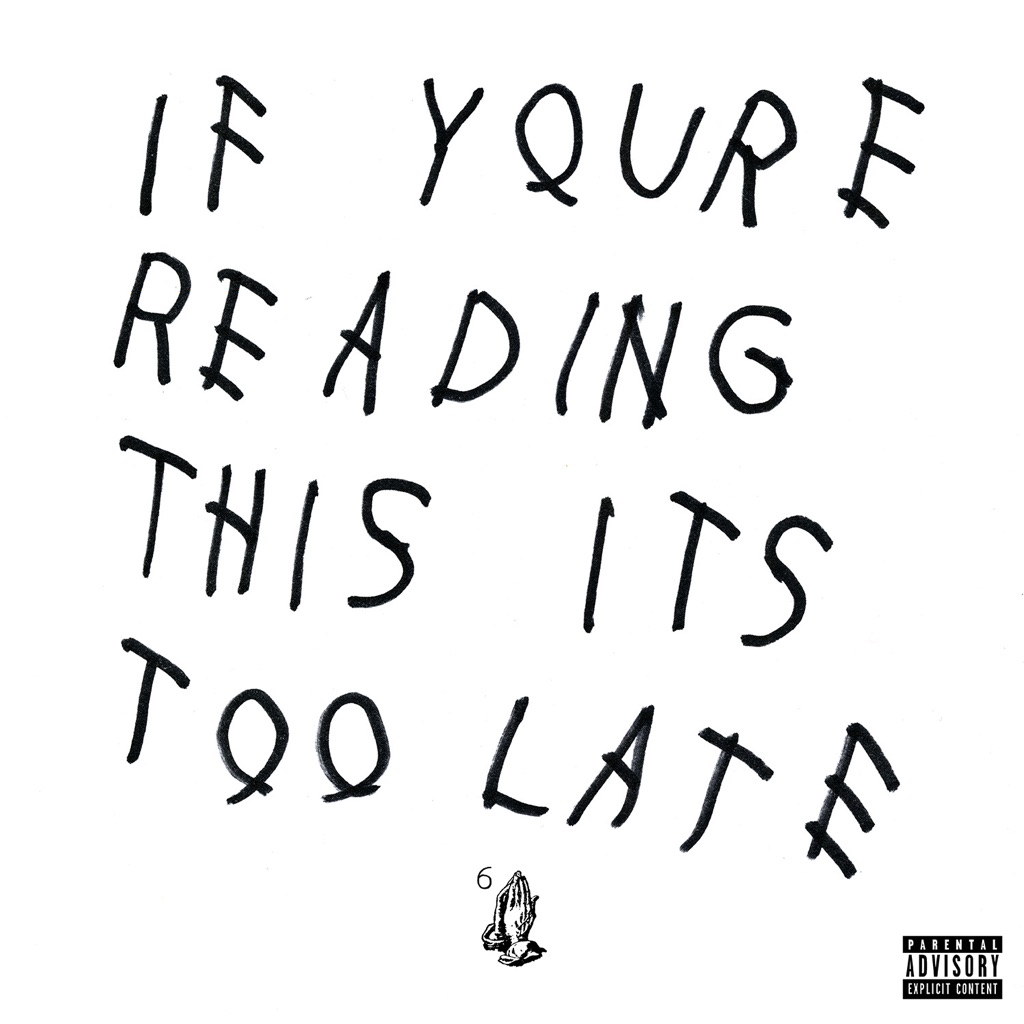
Exclaim!'s Top 10 Hip-Hop Albums of 2015
Our Best of 2015 albums lists by genre continue today with our staff picks for the 10 best hip-hop albums this year.
Click next to read...
Published: December 07, 2015 13:00
Source

Thanks to multiple hit singles—and no shortage of critical acclaim—2012’s *good kid, m.A.A.d city* propelled Kendrick Lamar into the hip-hop mainstream. His 2015 follow-up, *To Pimp a Butterfly*, served as a raised-fist rebuke to anyone who thought they had this Compton-born rapper figured out. Intertwining Afrocentric and Afrofuturist motifs with poetically personal themes and jazz-funk aesthetics, *To Pimp A Butterfly* expands beyond the gangsta rap preconceptions foisted upon Lamar’s earlier works. Even from the album’s first few seconds—which feature the sound of crackling vinyl and a faded Boris Gardiner soul sample—it’s clear *To Pimp a Butterfly* operates on an altogether different cosmic plane than its decidedly more commercial predecessor. The album’s Flying Lotus-produced opening track, “Wesley’s Theory,” includes a spoken-word invocation from musician Josef Leimberg and an appearance by Parliament-Funkadelic legend George Clinton—names that give *To Pimp a Butterfly* added atomic weight. Yet Lamar’s lustful and fantastical verses, which are as audacious as the squirmy Thundercat basslines underneath, never get lost in an album packed with huge names. Throughout *To Pimp a Butterfly*, Lamar goes beyond hip-hop success tropes: On “King Kunta,” he explores his newfound fame, alternating between anxiety and big-stepping braggadocio. On “The Blacker the Berry,” meanwhile, Lamar pointedly explores and expounds upon identity and racial dynamics, all the while reaching for a reckoning. And while “Alright” would become one of the rapper’s best-known tracks, it’s couched in harsh realities, and features an anthemic refrain delivered in a knowing, weary rasp that belies Lamar’s young age. He’s only 27, and yet he’s already seen too much. The cast assembled for this massive effort demonstrates not only Lamar’s reach, but also his vast vision. Producers Terrace Martin and Sounwave, both veterans of *good kid, m.A.A.d city*, are among the many names to work behind-the-boards here. But the album also includes turns from everyone from Snoop Dogg to SZA to Ambrose Akinmusire to Kamasi Washington—an intergenerational reunion of a musical diaspora. Their contributions—as well as the contributions of more than a dozen other players—give *To Pimp a Butterfly* a remarkable range: The contemplations of “Institutionalized” benefit greatly from guest vocalists Bilal and Anna Wise, as do the hood parables of “How Much A Dollar Cost,” which features James Fauntleroy and Ronald Isley. Meanwhile, Robert Glasper’s frenetic piano on “For Free? (Interlude)” and Pete Rock’s nimble scratches on “Complexion (A Zulu Love)” give *To Pimp a Butterfly* added energy.

Drake surprised everyone at the beginning of 2015 when he dropped *If You’re Reading This It’s Too Late*, an impressive 17-track release that combines the contemplative and confrontational with plenty of cavernous production from longtime collaborator Noah “40” Shebib. While Drizzy joins mentor Lil Wayne in questioning the loyalty of old friends on the woozy, Wondagurl-produced “Used To,” “Energy” is the cold-blooded highlight—on which he snarls, “I got enemies.” Later, amid the electrifying barbs of “6PM in New York,” Drake considers his own mortality and legacy: “28 at midnight. I wonder what’s next for me.”

Even as a 20-track double album, this is one of the most cohesive and engaging hip-hop debuts you’ll hear. Against dank, ambitious production overseen by storied beat-smith No I.D., the Long Beach rapper documents a life spent learning the power of fear in a gang quarter with vivid wordplay and uncompromising imagery. “Jump Off the Roof”’s paranoid gospel and the woozy soul thump of “C.N.B.” embody a thrilling opus that values darkness and anxiety over radio-baiting hooks.

Hailed as the post-Internet savior of New York rap, A$AP Rocky fully embraces the weight of those lofty expectations on his ambitious sophomore full-length. *AT.LONG.LAST.A$AP* finds the unflappable Harlem native marveling at his own meteoric success through an expertly curated set of beats—with production that corrals toothsome rock and soul samples, atmospheric pop menace, and trunk-rattling traditionalism. While “Wavybone” is a simple yet deeply satisfying highlight that also features sterling performances from two of Rocky’s most audible influences, Juicy J and UGK, “L$D” combines woozy low end and a glittering tangle of xx-like guitar lines for a psychedelic love song that’s sung but not rapped. “Everyday” turns a soulful Rod Stewart vocal sample (from the 1970 Python Lee Jackson cut “In a Broken Dream”) into a massive, Miguel and Mark Ronson–assisted meditation on fame and happiness.

*Surf* is the long-awaited collaboration between the unbilled Chance the Rapper, his band The Social Experiment, and musical ally Donnie Trumpet (a.k.a. Nico Segal). Chance gets his time to shine, spitting acrobatic rhymes throughout, but clearly this is a team effort focused on moving minds and butts. Flecks of big-band instrumentation lend sparkle, while folks like Erykah Badu, Busta Rhymes, Janelle Monáe, and Big Sean provide cameos. The vibe is reminiscent of Native Tongues or Soulquarians, a positive space to submit to creative freedom and unpredictable flow, just like the ocean itself.

Rapper Earl Sweatshirt’s third album is a dark, fascinating trip to the bottom of the self. Lyrically, Earl is a singular talent, capable of dense, expressive lines that flip back and forth between humor and pain, despair and resolve. “My days numbered, I’m focused heavy on making the most of ’em/I feel like I’m the only one pressin’ to grow upwards,” he raps on “Faucet,” over beats as hazy and fragmented as the words themselves.

Imbued with love, honesty, and selflessness, The Good Fight is virtuosic in its musicality, direct in its language, and infinitely relatable. In a landscape overrun with abstract indulgence and shallow trend-chasers, the Prince George’s County, Maryland artist has created a record that reminds you that it’s music before it’s hip-hop. For Oddisee, “The Good Fight” is about living fully as a musician without succumbing to the traps of hedonism, avarice, and materialism. It’s music that yields an intangible feeling: the sacral sound of an organ whine, brass horns, or a cymbal crash. It’s a meditation on our capacity to love and the bonds binding us together. It’s our ambition and greed warring with our sense of propriety - a list of paradoxes we all face when living and striving. Oddisee’s production simmers in its own orchestral gumbo. You sense he’s really a jazzman in different form, inhabiting the spirit of Roy Ayers and other past greats. The Fader’s compared him to a musical MC Escher, calling hailing his “grandiose and symphonic sound” and “relevant relatable messages.” Pitchfork praised his “eclectic soulful boom-bap.” “The Good Fight” acknowledges the stacked odds, but refuses to submit

Sour Soul is the collaborative album from Toronto jazz/hip-hop band BADBADNOTGOOD and Staten Island rap champ Ghostface Killah. Inspired by 1960s and 70s music - taking inspiration from the recording techniques and production of that era, and eschewing sampling in favour of live instrumentation, BBNG with producer Frank Dukes have created a dramatic, cinematic musical staging for Ghostface’s vivid storytelling. Sour Soul also features guest spots from MF DOOM, Elzhi (Slum Village / J Dilla), Danny Brown and prodigal new rapper Tree (Project mayhem).

A hot young talent with an old-school soul, New York rapper Joey Bada\$$ offers a gritty, witty, and deeply lyrical alternative to current mainstream hip-hop on his long-awaited debut album *B4.DA.\$$*. Over vintage boom-bap drums and soulful samples, provided by heavyweight producers like DJ Premier and Statik Selektah, the prodigiously skilled Bada\$$ updates the rough-but-smooth vibe of golden age rap for the millennial generation, rocking a flow that’s equally inspired by the introspective rhymes of Mos Def and the intricate street tales of Nas. *B4.DA.\$$* will thrill both hip-hop veterans and rap fans too young to remember the innovative \'90s greats that Bada\$$ reveres.
